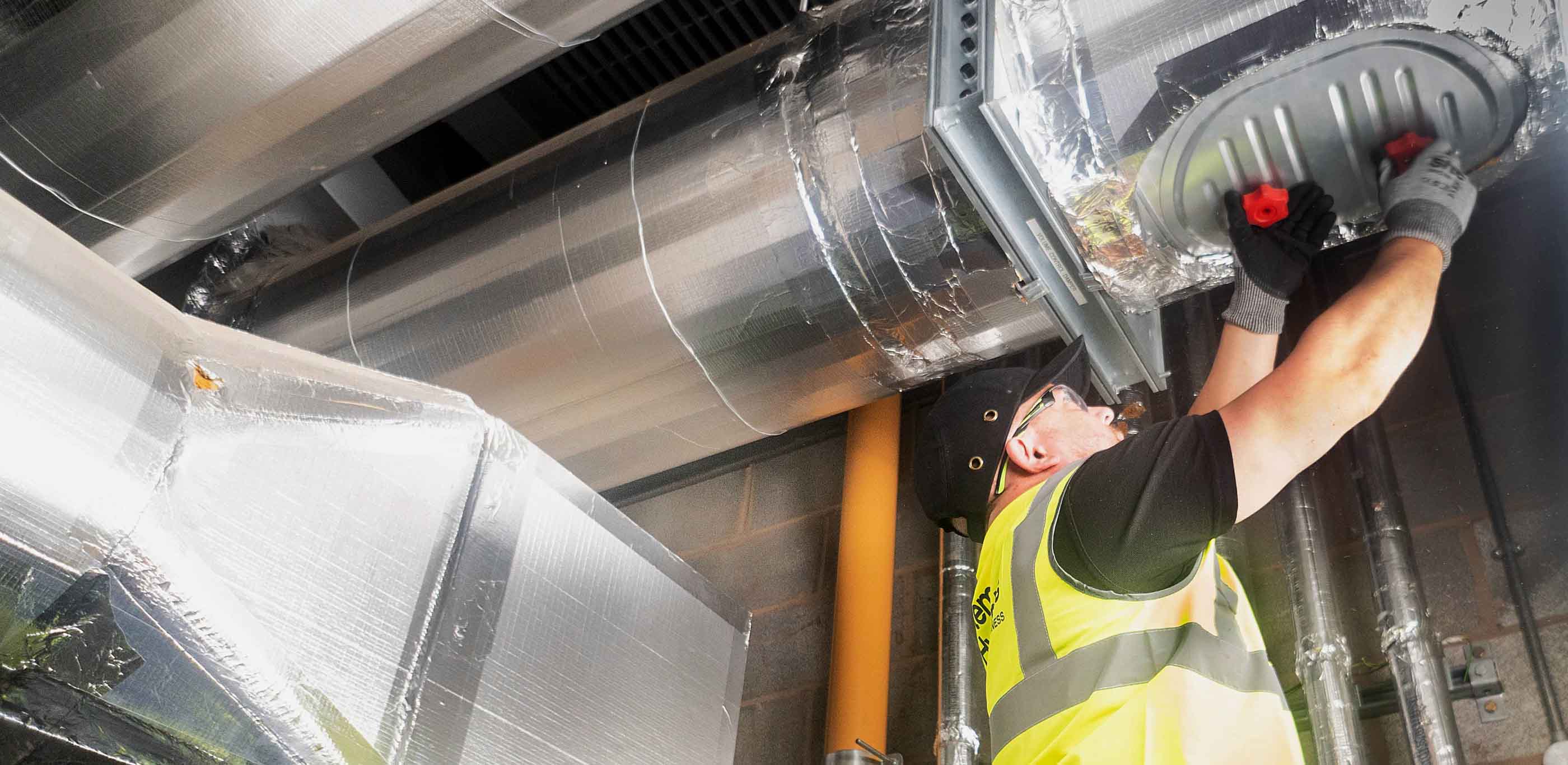Fire Safety in 2025
Understanding fire safety regulations isn't just about following the rules but protecting lives. Book your fire damper testing today

Fire safety regulations continue to evolve in 2025, emphasising preventive maintenance and regular testing of critical safety systems. For building owners and facilities managers, understanding these requirements isn't just about following rules – it's about protecting lives and avoiding costly legal consequences. One area that often gets overlooked is fire damper testing, yet these devices play a crucial role in preventing fire spread through building ventilation systems.
Fire Safety 2025: Why Fire Damper Testing Saves Lives/Costs
Understanding Fire Dampers and Their Critical Role
Fire dampers are safety devices installed in ductwork that automatically close when they detect heat or smoke. These mechanisms prevent flames and toxic gases from travelling through ventilation systems to other building parts. When working correctly, they can contain fires to specific areas, giving occupants more time to evacuate safely.
Many building managers don't realise the importance of these devices until problems arise. A failed fire damper can allow fire to spread rapidly through a building's ventilation network, turning a minor incident into a major catastrophe. This is why regular testing and maintenance are not just recommended – they're essential for building safety.
Although the technology behind these safety devices has improved significantly, they still require regular inspection to ensure proper function. Over time, dampers can become stuck, damaged, or corroded, preventing them from closing when needed. These problems can be identified and fixed only through systematic testing before an emergency occurs.
Legal Requirements Under British Standard 9999 (BS 9999)
BS 9999 sets the framework for fire safety in buildings, establishing clear guidelines for installing, testing, and maintaining fire safety systems. This standard specifically addresses the requirements for fire damper testing, outlining how often inspections should occur and what procedures must be followed.
British Standard 9999 requires that fire dampers be tested annually, with more frequent inspections in high-risk environments. The standard also specifies that testing must be carried out by competent persons who understand the technical requirements and can identify potential problems. This isn't something that can be done by general maintenance staff – it requires specialised knowledge and equipment.
The legal implications of non-compliance are severe. Building owners who fail to meet these requirements face potential prosecution, unlimited fines, and personal liability if accidents occur. Insurance companies may also refuse claims if proper maintenance records aren't provided, leaving owners facing enormous financial losses.
Commercial Landlord Responsibilities in 2025
Commercial landlord responsibilities have expanded significantly in recent years, with greater emphasis on proactive safety management. Landlords must now demonstrate that they have comprehensive maintenance programs in place, including regular testing of all fire safety systems.
These responsibilities extend beyond providing safe buildings. Landlords must also ensure tenants understand their obligations and have access to proper maintenance services. This includes coordinating fire damper testing schedules, maintaining detailed records, and ensuring any identified problems are fixed promptly.
Failure to meet these responsibilities can result in criminal charges, especially if negligence contributes to injuries or deaths. The legal landscape has shifted toward holding landlords personally accountable for safety failures, making compliance essential for protecting tenants and business interests.
The Connection Between Ventilation and Fire Safety
Modern buildings rely heavily on complex ventilation systems that can inadvertently help fires spread if not properly maintained. Vent cleaning and ventilation cleaning are crucial for preventing the buildup of flammable materials that could fuel fires or block safety systems.
Dirty ventilation systems pose multiple risks. Accumulated dust, grease, and debris can ignite easily, while blocked vents can prevent fire dampers from closing correctly. Regular cleaning ensures these systems work as designed during emergencies, maintaining their protective function when it matters most.
LEV systems (Local Exhaust Ventilation) require special attention because they often handle contaminated air that may contain flammable particles. These systems must be designed and maintained to prevent fire spread while continuing to protect workers from hazardous substances. This dual function makes regular testing even more critical.
Building a Comprehensive Testing Program
Effective fire damper testing requires systematic planning and professional expertise. Testing should be scheduled at a minimum of annually, with more frequent inspections in high-risk areas or older buildings. Each test must verify that dampers close completely within the required timeframe and that all components function properly.
Documentation is equally important. Every test must be recorded with details about the damper's condition, any problems found, and remedial actions taken. These records prove compliance and help identify patterns that might indicate broader system issues.
Professional testing services use specialised equipment to simulate fire conditions and verify damper operation. They can also identify problems before they become serious, such as corrosion, mechanical wear, or installation defects that could prevent proper operation during an emergency.
The Cost of Non-Compliance
The financial risks of inadequate fire safety compliance are substantial. Legal costs alone can reach hundreds of thousands of pounds, while compensation claims from injuries or deaths can run into millions. These costs pale in comparison to the human cost of preventable tragedies.
Regular testing and maintenance programs are relatively inexpensive compared to the potential consequences of system failures. Most building owners find that professional testing services pay for themselves through improved system reliability, reduced insurance premiums, and peace of mind.
Taking Action for Fire Safety Compliance
Fire safety compliance in 2025 requires proactive management and professional expertise. Don't wait for problems to develop or regulatory action to force compliance. Schedule comprehensive testing to ensure your building meets current standards and protects everyone inside.
Contact our qualified fire safety professionals to assess your building's compliance status and develop a comprehensive testing program that meets all legal requirements while protecting lives and property!

.png)
.png)
.jpg)